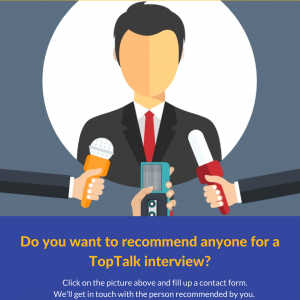 Bruce Bolger is President of the Enterprise Engagement Alliance at TheEEA.org, an outreach organization focusing on the development of a formal field to help organizations achieve results through the proactive involvement of all stakeholders. EEA runs the only formal learning program on engagement at EEA.tmlu.org and is the publisher of ESM (Engagement Strategies Media) at EnterpriseEngagement.org, which provides ongoing coverage of this new field, and of RRN at RewardsRecognitionNetwork.com, which focuses on all types of rewards used in incentive, recognition, loyalty and business gift programs. The EEA is the co-founder of the International Center for Enterprise Engagement at the University of Texas Medical Branch, which has created the first certification program for ISO 10018 quality people management principles.
Bruce Bolger is President of the Enterprise Engagement Alliance at TheEEA.org, an outreach organization focusing on the development of a formal field to help organizations achieve results through the proactive involvement of all stakeholders. EEA runs the only formal learning program on engagement at EEA.tmlu.org and is the publisher of ESM (Engagement Strategies Media) at EnterpriseEngagement.org, which provides ongoing coverage of this new field, and of RRN at RewardsRecognitionNetwork.com, which focuses on all types of rewards used in incentive, recognition, loyalty and business gift programs. The EEA is the co-founder of the International Center for Enterprise Engagement at the University of Texas Medical Branch, which has created the first certification program for ISO 10018 quality people management principles.
Bolger is also a founder of The Engagement Agency at Engagementagency.net, a company that helps engagement solution providers and their clients’ profit from engagement.
Bolger has over 25 years of management experience in rewards, recognition, and engagement. He was a co-founder of the Forum for People Performance Management and Measurement, a not-for-profit research organization affiliated with Integrated Marketing Communications department in the Medill School of Journalism at Northwestern University that was dedicated to conducting research in the area of business motivation and engagement. He is a frequent speaker on topics related to engagement and provides consulting on implementation to corporate practitioners and engagement solution providers.
Bolger was the original co-author of the Incentive Marketing Association’s Principles of Results-Based Incentive Program Design and is one of the first recipients of the CPIM designation.
What does employee engagement mean to you?
Employee engagement means fostering the proactive involvement of all employees to achieve organizational goals.
How to measure employee engagement?
You measure employee engagement with both qualitative surveys to see how they say they feel and then by economic metrics such as employee retention, revenue per employee, profits per employee, talent referrals, wellness and safety, absenteeism, etc.
What are the common causes of employee disengagement?
Lack of a sense of purpose or mission; no buy-in to the organization or the job; no sense of feeling valued; little feeling that one’s work or ideas are valued, etc.
What are the drivers of employee engagement in today’s fast-moving world?
A sense of mission and purpose; empowerment and the flexibility that comes with it; a sense of task value, and that my work and contribution is honored.
What makes a really effective employee engagement programme? Any best practices to share.
The most effective employee engagement efforts in terms of outcomes are those that are tied specifically to achieving the organization’s goals and the total satisfaction of customers, whoever they might be. So, the employee engagement effort is really part of an enterprise engagement effort that:
- Creates a 360-degree brand, values, and objectives that connects all stakeholders—customers, employees, distribution partners, vendors, and communities.
- Incorporates a leadership and coaching program to make sure leaders at all levels support that culture and values.
- Identifies all the key audiences and what is needed for them to buy into and contribute to the organizational goals.
- Implements ongoing communications plan using all appropriate organizational media to reinforce the message and bring it to life.
- Integrates the culture, values, and goals into all training for reinforcement and to ensure that training gives people the tools they need to succeed.
- Fosters a culture of continuous innovation so that every employee from the janitor to the summer intern feels they can make a meaningful contribution with a good idea.
- Systematically creates a sense of community that supports diversity.
- Includes rewards and recognition to demonstrate the organization’s commitment to excellence.
- Measurement, analytics, and feedback to foster continuous improvement.
A systematic approach to stakeholder engagement directed by the C-suite is now required in 60 ISO standards, including ISO 9001 quality people management.
